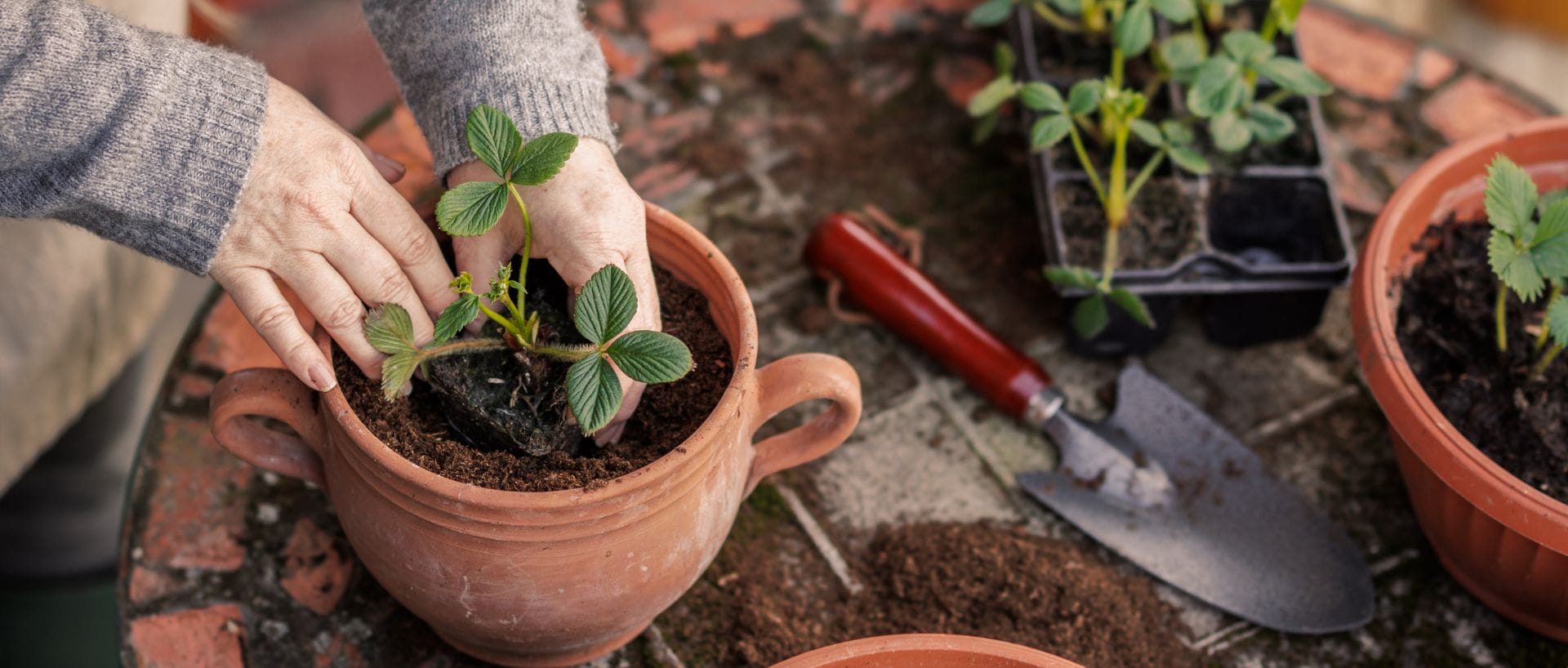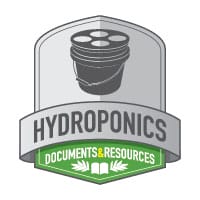With all of the complex processes and variables involved in hydroponics, the actual material hydroponic plants are grown on can become somewhat of an afterthought. Hydroponic mediums (or media – whichever you prefer) play a vital role in the health and development of plants though, and there are some important variables to consider when you’re deciding which one(s) to use. This week, we’ll discuss the properties of different media options and the factors involved in determining your best option. Once you’ve identified your “happy medium”, take advantage of our coupon code of the week to save on supplies for your next grow!
What are Hydroponic Grow Mediums?
The term ‘hydroponic medium’ or ‘hydroponic substrate’ simply refers to any aggregate or material plants can grow on other than soil/dirt. When it comes down to it, the difference is essentially the absence of plant-nourishing organic compounds (and most minerals) within the substrate in the case of hydroponic media. Hydroponic mediums don’t provide all of the nutrients that plants need, but they still serve to support root growth and promote good air/water ratio in hydroponics systems.
As we mentioned above, anything a plant can grow on that is not dirt could essentially be considered a hydroponic grow medium. And with a vast number of possible materials to grow on, hydroponic growth is actually much more common and natural than many realize. Take our picture at the top of the page for example: The roots of these little plants have established themselves between the bricks of the old wall. In this case, the wall is the medium and water will trickle through the cracks carrying with it a small amount of nourishment for the plant. This is just one example of what could be considered naturally occurring hydroponic growth.
Medium-Related Variables
While we don’t recommend planting in crumbling mortar, the example of the plant in the wall illustrates the tenacity of plants to root and grow despite the substrate, and thus, the reason why there are so many different types of hydroponic grow media. There are literally dozens of materials marketed as hydroponic medium products, with some very inventive and interesting options. Although all of these mediums will provide a foundation for planting, they will not all produce identical growth and rooting conditions. Mediums may all be immobile but they are not all inert. This means that some mediums can react to a hydroponic environment, affecting the mineral content and pH of nutrient solutions. While it’s not always detrimental, these properties can sometimes create unwanted conditions.
Best Hydroponic Medium Types
Aside from their physical properties, determining which hydroponic medium is best for you depends on a number of other factors including the hydroponic method, growth strategy, and nutrient approach you plan to use. The hydroponic medium types we will discuss here are those that have proven provide excellent rooting conditions with little to no unwanted impact on other growth-related factors.
Rockwool
Considered by some to be the one of the original hydroponic mediums, Rockwool, also known as stone wool, is sourced from silica-based rock. The rock is melted down and then spun to create fibers that can be pressed into blocks, slabs, and sheets. This process allows Rockwool to be manufactured in a variety of shapes and sizes. It also gives the material incredible moisture capacity and wicking ability with a great water-to-air ratio. A fully saturated cube will contain approximately 80% solution, 15% air, and 5% fiber. Rockwool can be easily transplanted into other hydroponic mediums or even larger Rockwool cubes or slabs. Stacking cubes/slabs allows the roots to grow into the medium below with little to no transplant shock.

Pros:
- High moisture holding/retention properties vs. other mediums
- Comes in a variety of sizes and forms
- Transplants easily with reduced shock
Cons:
- Sometimes requires pH buffering to ensure stable levels
- Can experience algae buildup on surface if not covered
- Offers little support base, plant support(s) usually required
Recommended for: Seed-starting/cloning, NFT hydroponics, flood and drain tables, drip feed systems
Coco Coir
Coco coir goes by several different names including coco fiber and coco peat. Made from actual coconut husks salvaged from the food processing industry, this all natural medium is fast becoming one of the most popular choices among hydroponic growers. It is naturally close to pH neutral and offers excellent water-retention/wicking capabilities making it easy to work with. Also available in many forms such as chips, ‘birds nest’, and ground (similar consistency to peat moss), coco coir can accommodate many types of plants and planting methods. Coco also contains natural polymers that can encourage beneficial bacteria growth for optimal root health. Highly versatile, coco coir is limited to the types of systems it works well in due to the fact that it consists largely of small particles. However, this issue can be overcome in some flood and drain hydroponics applications if the use of smart pots or fabric pots is an option. The cloth material acts as a filter to keep the coco particulates contained and helps to ensure optimal aeration in the medium.

Pros:
- Better moisture-retention/oxygenation value than most other options
- Excellent choice for feeding programs that incorporate beneficial bacteria
- Renewable resource, low environmental impact
Cons:
- Lower grades can leach calcium/magnesium – supplementing may be needed
- Small particulates limit use in some hydro systems
Recommended for: Drip feed, hydroponic wick, hand watered, some flood and drain applications
Perlite
Perlite is another medium composed of volcanic minerals that are subjected to very high heat during the manufacturing process. This causes the material to expand like popcorn and gives it its light-weight, porous, and absorbent qualities. Perlite has a neutral pH, excellent wicking capabilities, and great oxygen capacity. It can be used by itself or mixed with almost any other type of medium. Because it is so light, it will float, which limits the types of hydroponic applications it can be used in. Perlite also drains almost too well for some applications so it is often mixed 50/50 with vermiculite, which increases moisture retention.

Pros:
- pH neutral
- light-weight, easy to handle
- Very high oxygen holding capacity
Cons:
- Limited hydroponic applications as a standalone medium
- Not reusable
Recommended for: Drip feed, hand watering, mixed-medium applications
Expanded Clay Pebbles
Known as clay pellets, grow rocks, and hydroton among others, expanded clay pebbles are one of the most popular hydroponic grow mediums. Expanded clay mediums are manufactured in a way similar to perlite, where bits of clay are baked at high temperatures and expand to create the final product. At around 1-18 mm in size, clay pebbles provide an excellent structure for root growth and a substantial support for plants. They are also inert and will not affect the pH/EC of the nutrient solution, making them a favorite of precision growers. A porous quality allows expanded clay pebbles to retain moisture and oxygen, but they do not hold nearly as much solution as other mediums. This requires more frequent watering/feeding in order to maintain proper moisture levels in the medium.

Pros:
- Shape and texture allows excellent flow of solution through the medium
- Reusable
- Provides excellent support for root zone
- pH neutral and inert
Cons:
- Somewhat expensive relative to other mediums
- Requires more frequent watering/feeding
- Fast draining property can lead to salt buildup in mismanaged systems
Recommended for: ebb and flow system, DWC, recirculating systems
Growstones
Although it gives the appearance of rocks, Growstone is actually made from 100% recycled glass. Growstone is unique when it comes to hydroponic mediums in that it holds almost equal amounts water and air. Growstone has all the same benefits as expanded clay pellets, however, it offers much greater water and oxygen retention. Growstone also releases silica into the solution when agitated, which is both a benefit to overall plant health as well as a protective measure against certain pests and diseases.

Pros:
- Improved water/air ratio
- Available in many sizes for different applications
- Recycled, environmentally friendly
Cons:
- A bit on the expensive site
- Not reusable for large-scale growing
Recommended for: ebb and flow, DWC system, recirculating systems
As you can see there are many factors that determine the best hydroponic medium for your particular application. Media will perform differently based on the situation they’re used in, and all of them have advantages and disadvantages. Perhaps the answer isn’t just one medium but a combination of two or more, which many growers have taken a liking to. In any case, HTG Supply has what you need to get the job done, and if you’re still unsure, our friendly experts are here to help!
______________
Tell us what hydroponic medium you like! Throw a picture on Instagram and tag us in it (@HTGSupply) – we’d love to see your results! And don’t forget to check out this week’s coupon code and sale information below! From all of us here, good luck, stay safe, and Happy Growing!

THIS WEEK’S COUPON CODE: MEDIUMS121517
Enter this week’s promo code at checkout for a 10% discount on coco, clay pebble, and Rockwool mediums or visit your local store and simply mention this article to get the deal! Thanks again for tuning into Talking Shop with HTG Supply! Offer valid through HTGSupply.com and in-store 12/15/17-12/22/17. Cannot be combined with other offers. Follow us on social media for all the Sales, Events and Customer Appreciation Days. In addition, learn more about indoor growing and get all kinds of tips, tricks and techniques!


